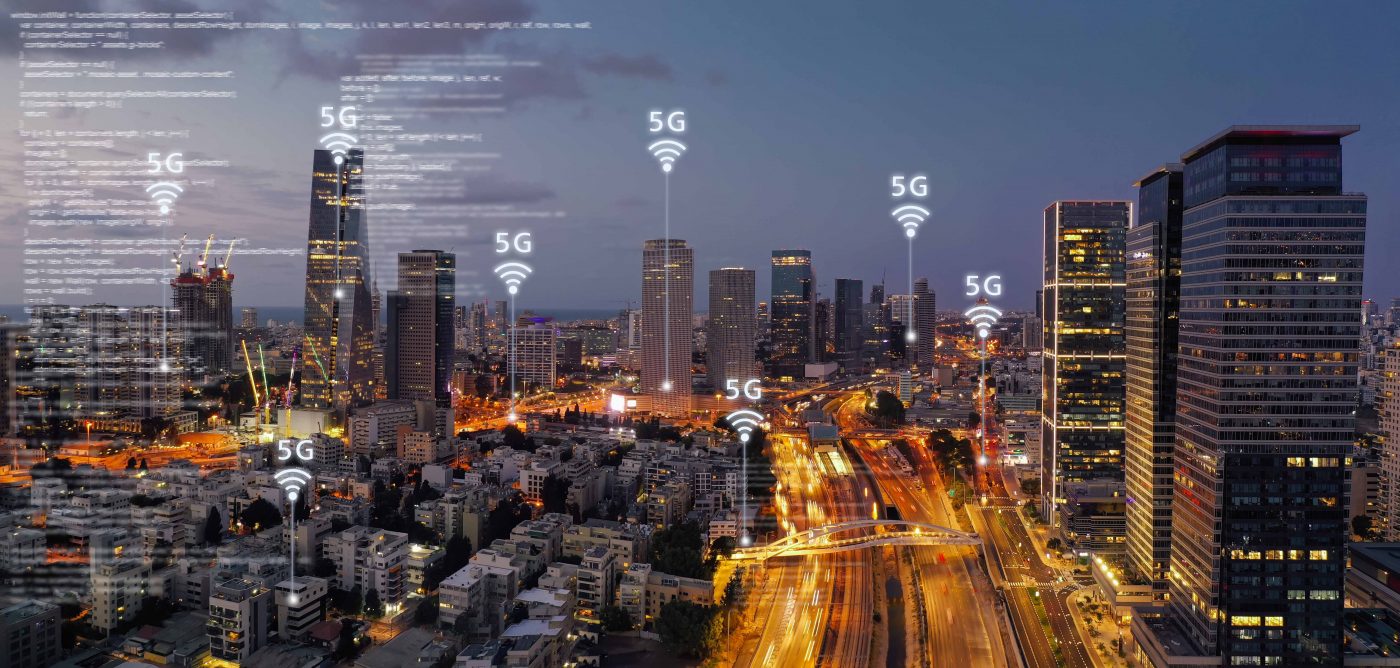Materials Meet Needs of Millimeter-Wave 5G Small Cells

Fifth Generation (5G) networks offer extensive wireless services with even faster data rates to come. Most of the systems have been based on signals below 6 GHz. Once network coverage has been achieved at higher, millimeter-wave (mmWave) frequencies of 24 GHz and higher, 5G networks will support multi-gigabit upload and download speeds. Distributed network coverage at those higher frequencies will require many small cells with printed-circuit boards (PCBs) capable of RF, microwave, mmWave, and high-speed-digital (HSD) operation. Those small cells will demand PCB materials with high performance and reliability through mmWave frequencies, and with characteristics well suited to the operating environments of both indoor and outdoor 5G small cells.
Small cells in 5G networks are being designed for use at mmWave frequencies to take advantage of available frequency spectrum for wideband communications, including streaming video and fast data. By using mmWave spectrum and transmission bandwidths as wide as 2000 MHz, 5G small cells are being designed for upload speeds as fast as 10 Gb/s and download speeds to 20 Gb/s. But operating at those higher frequencies and bandwidths small cells will be much smaller than standard 5G cell sites or base stations, with far fewer simultaneous users and providing much smaller coverage areas because of the short-wavelength signals that provide coverage at mmWave frequencies. While base stations or macrocells may cover circular service areas several miles in circumference, dedicated small cells may be needed for each block of a city’s 5G service area.
5G small cells will be constructed in three basic sizes for indoor and outdoor use: microcells, picocells, and nanocells. The largest of the three, microcells, may be in shoebox-sized enclosures on every street corner, mounted on lamp posts to give 5G service providers as much as one mile of indoor and outdoor coverage from about 2 W (+33 dBm) maximum transmit power at mmWave frequencies. Smaller and with about 0.25 W (+24 dBm) transmit power, picocells will provide short-range coverage (about 600 ft.) when mounted outdoors or indoors. The smallest of the small cells, a femtocell, is for indoor use only and typically for a single user. It transmits at about +20 dBm power for a maximum coverage range of about 30 ft.
Densely Packed PCBs
As 5G expands, thousands of small cells will provide new wireless capabilities to millions of 5G users in every major metropolitan area. The small cells will be invisible to most users, mounted at reasonable heights on lamp posts to avoid obstacles that might block mmWave signals. And they will lack the attention-grabbing presence of 4G base stations, with their multiple towers and large antennas. But, to consistently perform the many functions required of small cells for dependable 5G wireless communications, especially within the uncharted domain of mmWave frequencies, they will contain a full share of technology within those small enclosures, calling on densely packed PCBs with many integrated circuits (ICs) mounted on multilayer circuit assemblies.
What types of challenges exist for circuit materials in these 5G small cells? Consistency is a key term for many material characteristics, especially across wide operating temperature ranges and changing conditions such as temperature and humidity. Circuit materials for PCBs in 5G small cells must maintain electrical consistency, for such parameters as dielectric constant (Dk) and dielectric loss or dissipation factor (Df), as well as mechanical consistency capable of holding the tight dimensional requirements for multilayer PCB assemblies that pack a great deal of functionality within a small space. Whether at the prototype stage, where innovative designs may be implemented in as many as 16 circuit layers, or in final production that might require highly integrated circuit assemblies with as many as 40 circuit layers (as some PCB fabricators are claiming), the mechanical consistency is critical for maintaining the alignments of transmission lines that impact signal amplitudes and phases as mmWave frequencies. Alignments between circuit layers are also important, in the form of blind and buried via-hole interconnects, and mechanical circuit material deviations because of environment effects such as temperature, humidity, even vibration of the 5G small cell can degrade small cell electrical performance.
In general, circuit materials for 5G small cells, should have low Dk values. While those Dk values may not be totally constant with operating frequency, since circuit material Dk tends to gradually decrease with increasing frequency, they should be predictable so that a measured Dk value at frequencies below 6 GHz can be accurately projected for frequencies above 24 GHz in 5G small cells, to aid the accuracy and effectiveness of computer-aided-design (CAD) software tools used in circuit modeling.
Circuit materials for 5G small cells should also exhibit low Df values, which will rise as a function of frequency, to minimize dielectric circuit losses. Circuit materials with minimal moisture absorption, especially in outdoor cells, can minimize the dielectric losses caused by water absorption in high humidity environments. Specifying circuit materials with smooth conductors can also help minimize conductor losses at mmWave frequencies. The combination of low conductor and dielectric losses greatly aids hybrid mixed-signal circuits which may include radio transceivers operating at mmWave frequencies, microprocessors, data converters running at multigigabit rates, and the wide assortment of high-frequency, high-speed components and surface-mount-technology (SMT) devices employed on 5G small-cell PCBs, such as low-noise amplifiers (LNAs), power amplifiers (PAs), and digital attenuators.
Given the need to transmit signals from such small enclosures, 5G small cells also flirt with the effects of internally generated heat, from active components such as PAs and resulting from excessive circuit losses. PCBs for 5G small cells should have thermal management capabilities that can safely conduct heat away from heat-generating components and the components and circuit surrounding them and to outside the small cell enclosure. A critical material parameter, coefficient of thermal expansion (CTE), provides insight into how a circuit material changes physically as a function of temperature, in all three axes, so that it can also provide a means of evaluating different circuit materials for the durability of plated thru-holes used to interconnect multiple circuit layers.
Sorting Solutions
With the high device densities and hybrid natures of PCBs in 5G small cells, practical circuit materials must be formulated for stable but exceptional electrical behavior as well as outstanding mechanical behavior even in outdoor operating environments. In addition to performance, there is the manufacturing aspect and favorable circuit materials for 5G small cells should also be process-compatible with commonly used circuit materials, such as FR-4, which may also be within a 5G small cell enclosure and part of the production line for 5G small cell PCBs. Fortunately, I-Tera® MT40, Astra® MT77, and Tachyon® 100G circuit materials from Isola-Group (www.isola-group.com) are low-loss substrates with high dimensional stability across temperature and humidity. All three materials feature less loss than traditional FR-4 circuit materials at higher frequencies, but they are process-compatible with FR-4 materials to help speed and simplify the steps needed to fabricate multilayer circuit assemblies for 5G small cells.
All three substrates employ low-profile copper conductors which contribute to low loss in HSD circuits and low passive intermodulation (PIM) in antennas and other analog mmWave circuits. The three materials feature good dimensional stability with temperature, which minimizes physical changes with temperature for good soldering accuracy. And all three exhibit extremely low moisture uptake so that even in high-humidity operating environments, increases in signal loss due to moisture absorption will be minimal, even at mmWave frequencies. For processing purposes, all three are characterized by a glass transition temperature (Tg) of +200°C.
More specifically, I-Tera® MT40 (RF/MW) laminate and prepreg materials (Fig. 1) have a typical Dk of 3.45 at 10 GHz as measured through the z-axis (thickness). The materials have typical Df of 0.0031 at 10 GHz. With a low z-axis CTE, the circuit materials suffer 2.8% or less total variation in thickness at temperatures from +50 to +260°C. This enables reliable plating of thru-hole interconnections with the tight impedance control needed at mmWave frequencies. High thermal conductivity of 0.61 W/m-K helps channel heat away from a source, such as a PA, while low moisture absorption of 0.1% means loss characteristics that are unaffected even in high-humidity operating environments.
When less loss is required at a lower Dk, Astra® MT77 laminates and prepregs (Fig. 2) exhibit typical Dk of 3.0 through the z-axis at 10 GHz, with Df of 0.0017 at 10 GHz. The Dk through the z-axis remains constant at 3.0 from -40 to +140°C, with thermal conductivity of 0.45 W/m-K to aid in the transfer of heat. Astra® MT77 circuit materials are very stable in high-humidity conditions, with low moisture absorption of 0.1%.
The third of the three circuit materials, Tachyon® 100G laminates and prepregs materials (Fig. 3), are well suited for HSD circuits of 100 Gb/s and faster in 5G small cells. They have a Dk through the z-axis o 3.02 at 10 GHz which remains constant for operating temperatures from -55 to +125°C and Df of 0.0021 at 10 GHz. With a thermal conductivity of 0.42 W/m-k, they can support densely packed PCBs with high heat sources and, with low z-axis CTE, they z-axis variations with temperature of only 2.5% result in dependable plated thru-holes for multilayer circuit assemblies. They share the low moisture absorption of 0.1% of the other two mmWave circuit materials.
PCB assemblies within 5G small cells will be densely packed with components to maximum analog and digital functionality while delivering the consistency and reliability needed for modern 5G wireless network communications service. Circuit materials for those PCB assemblies will serve as foundations for the HSD and mmWave signals moving to and from the 5G small cells and they must perform in all seasons and at all temperatures. The choice of circuit materials for many of the circuit layers in those assemblies will be critical to determining the successful operation of 5G wireless networks at mmWave frequencies.
 by Alexander Ippich, Technical Director
by Alexander Ippich, Technical Director
Signal Integrity & Advanced Technology, Product Manager RF/Microwave
OEM Marketing Europe, Isola
References
“Isola’s Role in the Deployment of 5G”
“The Importance of Circuit Board Material for Millimeter-Wave Circuits”
Figure captions
- I-Tera® MT40 circuit materials support high-performance mmWave, HSD, and mixed-signal circuits in 5G small cell circuit assemblies. [Image of I-Tera MT40]
- Astra® MT77 laminates and prepregs meet the most demanding low-loss circuit requirements at mmWave frequencies to 110 GHz and higher. [Image of Astra MT77]
- Tachyon® 100G circuit materials are well suited for HSD circuits operating at rates to 100 Gb/s and beyond as parts of hybrid circuit assemblies in 5G small cells. [Image of Tachyon 100G]
02 November 2022


